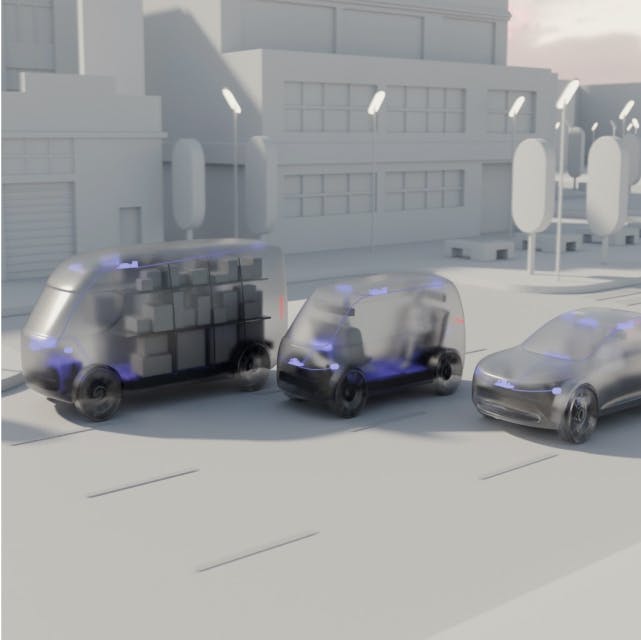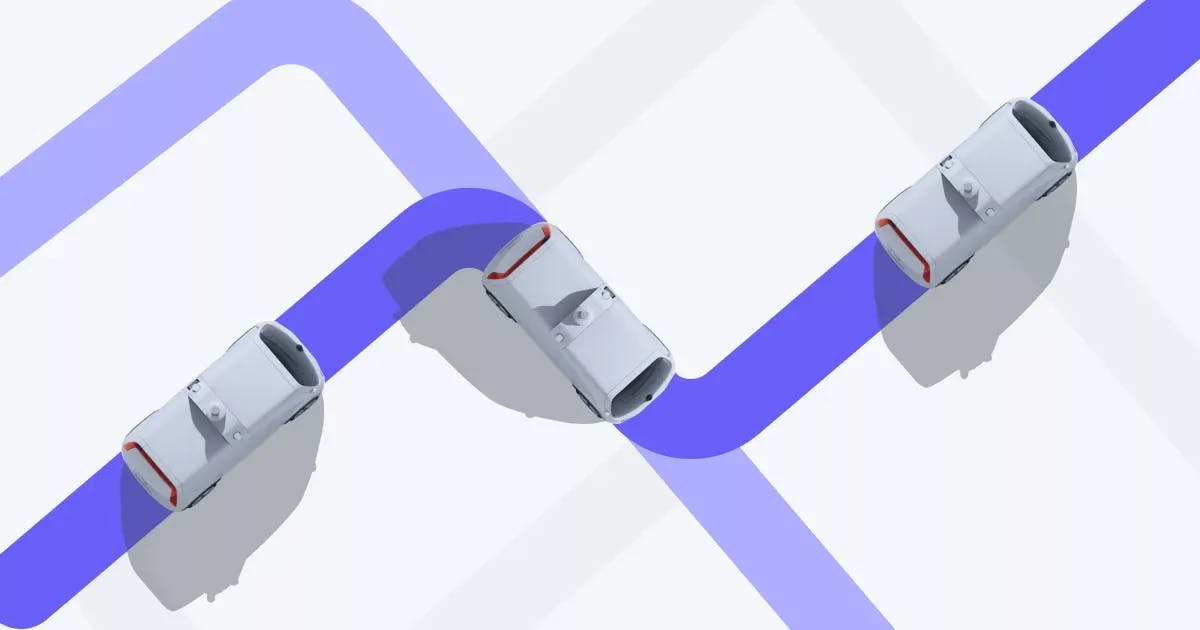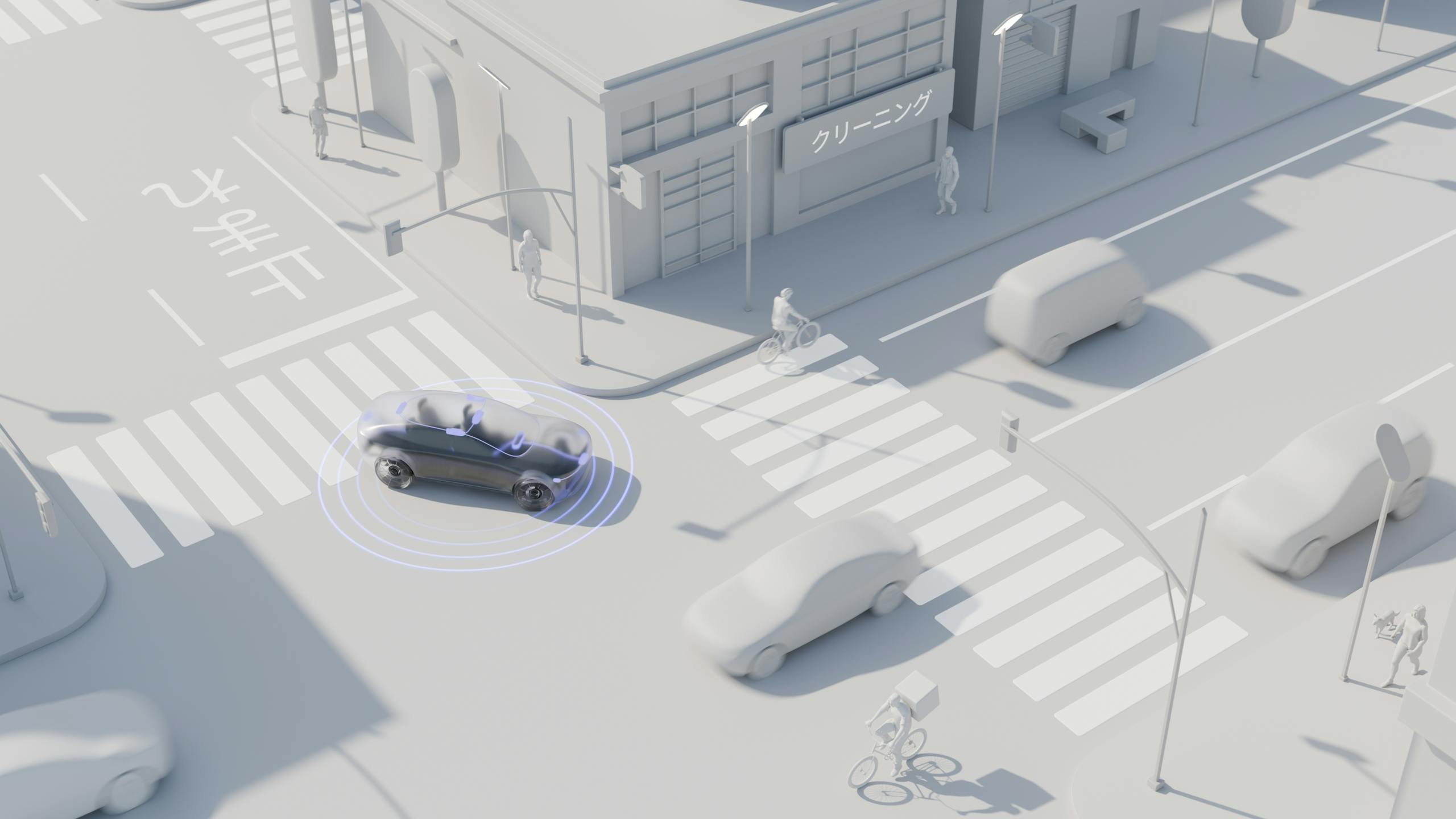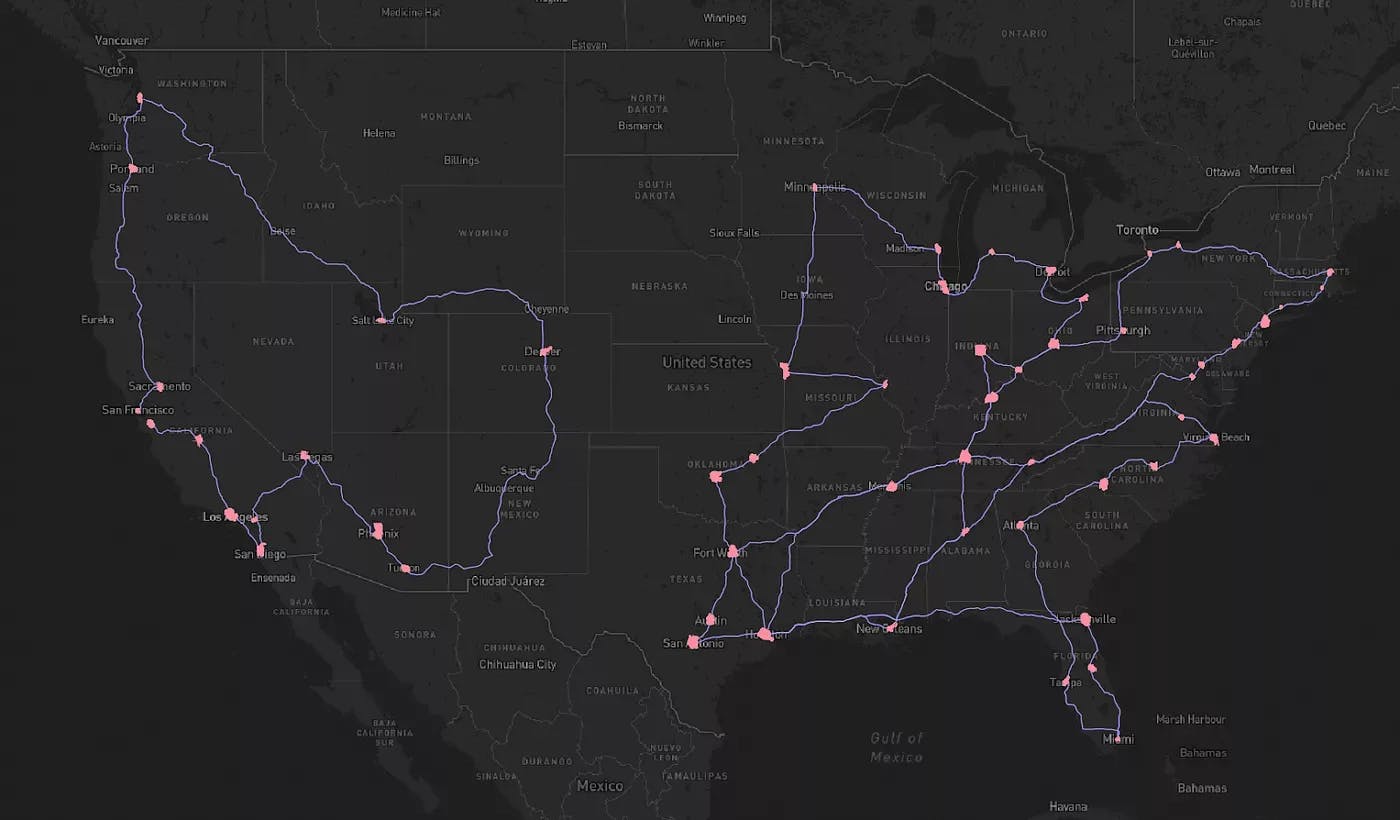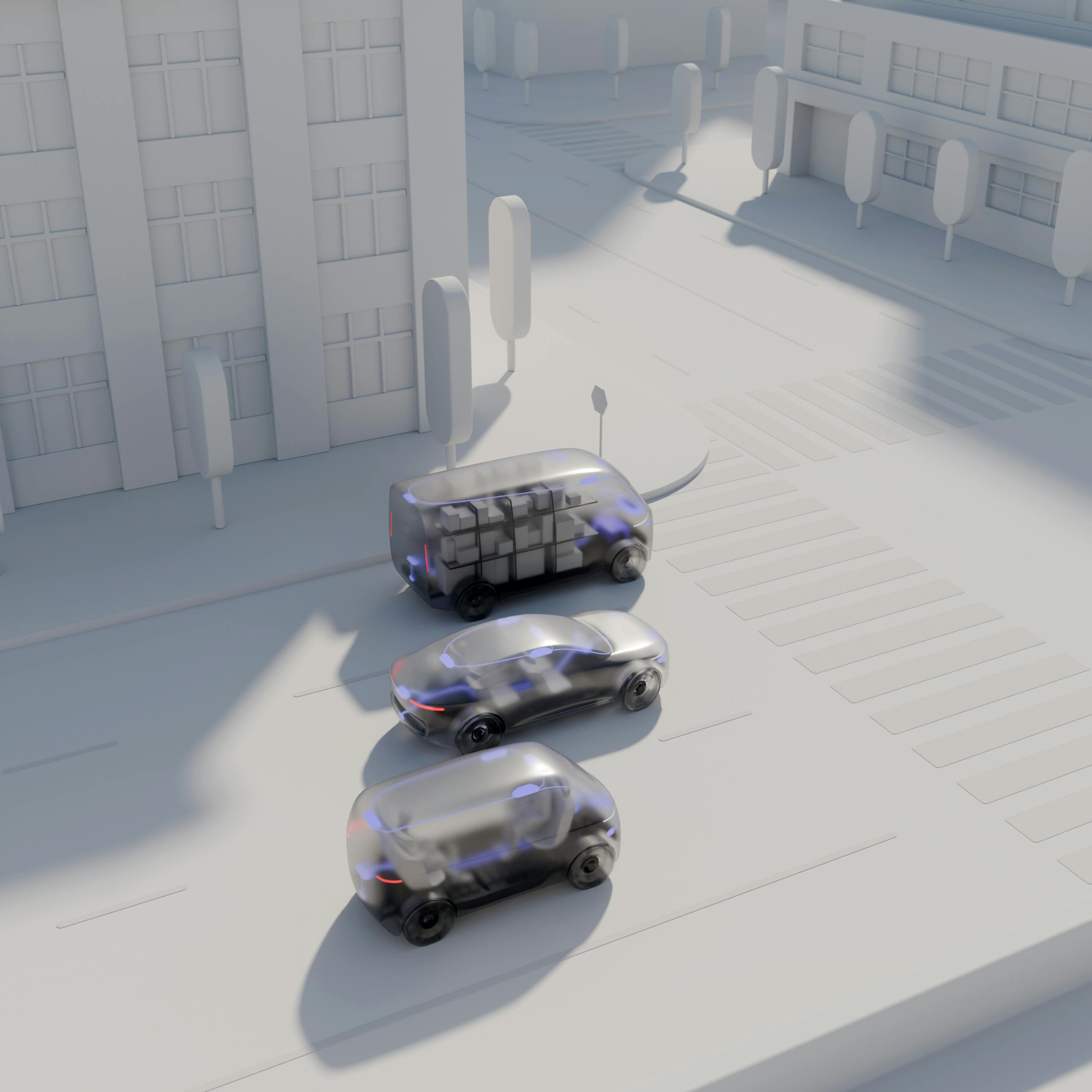Ops is where our safety story hits the road. It’s at this stage that we connect our service with our customers and have the chance to prove our safety validations, gaining valuable public trust. We’ll dive into how we operate and maintain our fleet with safety at the top of mind, but in order to do that, we’ll also go into more detail about the safety culture that informs our larger operational components.
Safety through operations
We think of ops in two halves: the first half is our delivery service, and the second half is our development and expansion processes, so we’ll dive into each half:
Delivery service
Safety is built into every part of our operations. We begin our day by conducting health tests on each vehicle, which is a crucial part of safely deploying our service: we need to ensure that every vehicle is operating properly. Our fleet techs oversee vehicle startups and health checks, closely following a presartup fleet checklist with all the proper safety requirements. If a safety critical issue is discovered, the techs will promptly and effectively escalate it through the emergency action plan. The fleet techs have a variety of tools that walk them through that process so nothing is missed. And, since redundancy is a key component of our safety approach, they’re not the only ones who check the vehicles — once they’ve signed off on the health of a vehicle, it’s passed on to our remote operators for final checks.
When a vehicle is ready to begin making deliveries, it will arrive at our partner’s store, be loaded by an employee, and begin driving to a customers’ house. If, at any point in that process, there are issues — such as a customer being unable to access the compartments holding her order — our remote operators can easily assess and act. The customer would simply use the HMI to contact Support Ops, and they’ll connect them with a Remote Operator who can remotely open the doors.
We also have remote operators who can monitor vehicles and pull vehicles over that require help. We train and prepare for any safety or service issues that may arise. For instance, if the vehicle detects low tire pressure , the vehicle will either pull over or be routed to the nearest maintenance station, where it will be assisted by our fleet team or service provider.
And, because continuous improvement is part of our safety culture, the Central Planning Team reviews the day’s performance after deliveries are completed, and collectively we look closely at safety performance in our routine business reviews. We get insights into key issues, root causes, and delays so that we can make improvements moving forward.
Development and expansion
We take a careful approach to expansion, first gathering real data from customers to understand the demand of areas and to understand the real issues of deployment, such as traffic density, weather conditions, road complexity, speed limits, etc. After we’ve determined a practical area in which to expand, we build our own high-definition maps. Building a high-definition map is an important first step in enabling autonomy and expanding our operating area. We use a series of data pipelines and automated checks to build the context map to ensure accuracy. This accuracy is crucial for safe, informed operation. Once the map is built and passes our release processes, we are ready to start operating.
The in-vehicle team takes over once the map is ready. They drive a variety of missions — depending on our current priorities — that range from simple mileage collection to autonomous vehicle operations. One of the ways Nuro tests and improves our self-driving software is by operating Prius vehicles equipped with the same self-driving software and sensing hardware as the custom vehicles on closed courses and public roads. During this testing, safety drivers and co-drivers monitor the vehicle’s operation. Safety drivers are responsible for protecting themselves and the public through safe, conservative driving, and when needed, appropriate disengagement from self-driving mode. Our in-vehicle operators are highly trained drivers that are capable of proactively responding to issues in the real world. We are proud of our on-road safety performance, and much of this result is due to the highly attentive, highly trained operators behind the wheel of our Prius fleet. After collecting miles on public roads, our logs enter various data pipelines that support software development. We then run various software versions across the miles in our database to further validate and develop our software, which is important to give us scale and confidence around our performance.
To launch deliveries, we first complete customer integrations, launch Prius deliveries, and then transition to true occupantless deliveries with our Nuro vehicles. We also execute “mock deliveries” in a closed course to ensure the reliability of our systems. All of these operations — closed course, public road prius operations, simulation, and other validations — are what make us confident that our customers will have a great experience.
This process takes quite some time, but is critical to ensure we are deploying validated technology on community roads.
A foundation of safety
Understanding Nuro’s safety culture provides more context about how we operate. For us, there is no delineation between activities that require safety and activities where safety may be optional; there’s no “off” switch. And that’s important because, even when not driving, our Nurons still watch for unsafe situations and actively work to mitigate harm — we have a multi-layered, built-in safety strategy that includes everything from engineered safeguards to concern reporting. That layered, careful mindset becomes a default way of viewing the world so that we’re active stewards of the wellbeing of ourselves and of others.
Our Workplace Safety Team is one example of how seriously we take the safety of others. They’re responsible for making sure Nurons get home safely every day, and they’re focused on overall safety in the workplace, from our headquarters to our test track.
Working with the community
Since our work touches people, we need to expand the umbrella of our safety culture to cover the communities in which we operate. Part of that means proactively engaging with local officials, communities, law enforcement, and emergency response agencies. We’ve developed emergency action plans and conducted drills with local law enforcement and emergency responders so everyone — from Nurons to police officers — knows exactly what steps to take during an emergency
Another part of that safety umbrella involves developing engagement and feedback processes for Nuron operators, partners, and end customers. If there’s unsafe behavior, we have clear channels to gather and act upon that information. We also utilize performance measurements to ensure we understand real-time safety. This allows us to be both efficiently reactive, but also to look at safety trends over time.
Safely operating together
Nuro really approaches safety from every angle. Our foundation is our safety culture, and by shifting into that mindset, we’re able to build from a safety-first perspective. And that happens long before we begin the arduous process of deployment, which is a data-informed approach involving countless tests and validation.
All of this is crucial: we truly want to improve road safety, and that only happens if we approach every aspect of our business and technology through a safety-first philosophy. The communities in which we operate deserve a future with fewer road accidents and injuries, and Nuro can help make that happen.

